
The Chessie livery is pretty damn snazzy. I also like that the C&O went and took over a bunch of ailing railroads and basically said "You belong to us now because you can't run yourself. Now go paint kittens on all your equipment." Kind of insult to injury at that point.
My only gripe is that the Chessie System roster was pretty unexciting. It was all just EMDs and GEs. Probably the lack of Alco and Baldwin and FM exotica is why Chessie System stayed financially solvent, but I still would have liked to have seen Alco C630s and FM Train Masters in the orange, yellow and dark blue.
Also weird, was while both Baltimore & Ohio and Chesapeake & Ohio used the Chessie System livery, Western Maryland continued to use their own paint schemes after they had merged into Chessie, right up until the CSX merger.





The Western Maryland had some old GP7s and GP9s where they cut down the front hood (early GPs and SDs didn't offer a lower height front hood) and they were some weird-looking beasts. They left the front hoods a little bit too high compared to how EMD would offer them, and they had no front sun visor.
While the C&O #1309 restoration debacle is ongoing, the Western Maryland Scenic Railroad has bought a pair of GP30s and done them up in the old WM livery (I don't think the WM ever owned any GP30s) and they look great. Now, if only they could get that steam engine restoration wrapped up with a bit less controversy.

Then you had the Lehigh Valley, which in their final pre-Conrail years had a dizzying array of paint schemes.
There was the tradition Cornell Red with black and yellow accents.

Their big Alco C628s wore a unique paint scheme that was referred to as the "Snow Bird", although because of how dirty they got, the LV repainted some of them to the traditional Cornell Red

Then their Alco C420s were painted in a L&N-esque gray and yellow, referred to as "Yellow Jackets"

And then there was an odd paint scheme that was only applied to two or three locomotives, called the "Cigar Band"
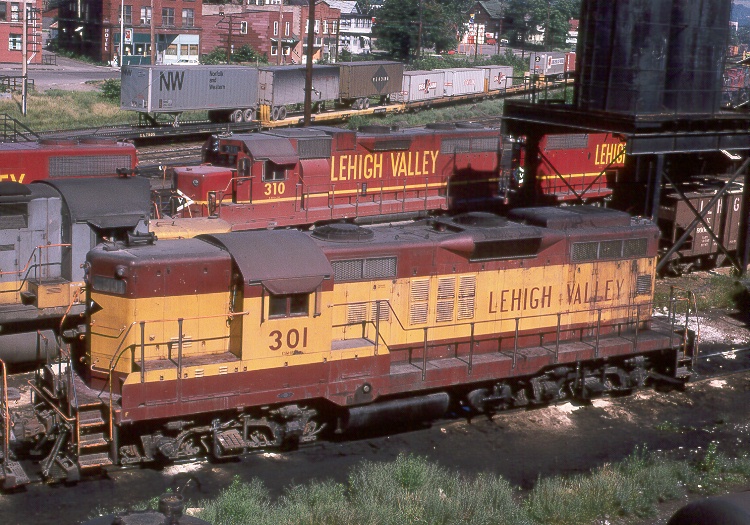
In reply to Pete Gossett :
There is, although Wabash wisely used darker colors towards the air intakes and exhausts, so their engines looked a lot less bedgraggled than the "Snowbirds". I wonder what the trend of the waving flags was though.
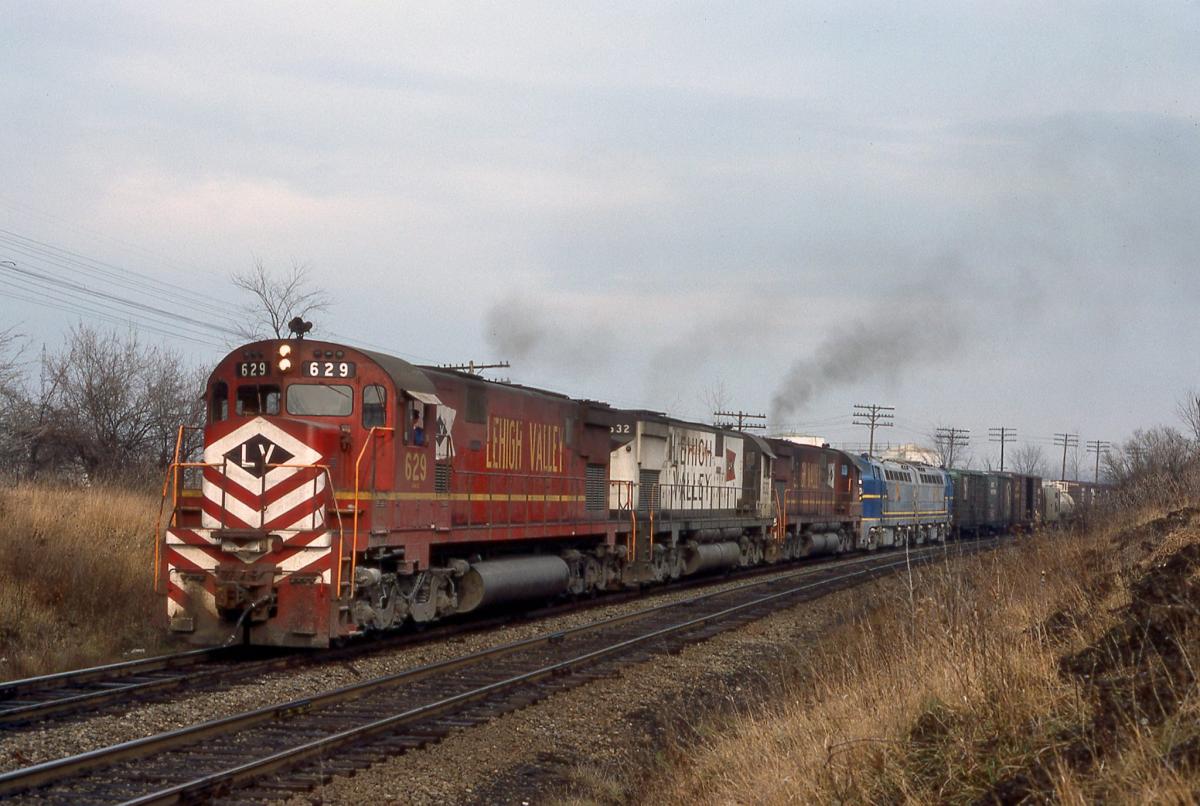
3 Lehigh Valley C628s, 2 in Cornell Red and 1 in Snow Bird, leading the 2 Delaware & Hudson Baldwin RF-16 "Shark Nose" at Schenectady, NY in 1975. This would be a year before the Lehigh Valley became part of Conrail. Also, there must be a second crew aboard the Baldwins, because Baldwins used a weird air throttle that made them Multiple Unit-incompatible with EMDs, GEs, Alcos and FMs.

Shiny new Alco C628s on the little Monon. Monon, in anticipation of a planned coal interchange, bought a bunch of C628s. The ICC blocked the interchange, and the Monon found that the big C628s were tearing up their track, so they traded them back to Alco for a brace of C420s, and Lehigh Valley, who already had a bunch of C628s and loved them, snapped up the ex-Monon units and used them until the Conrail merger in '76. Conrail kept them on the roster until 1978, when they parked them, and then scrapped them all in 1980.
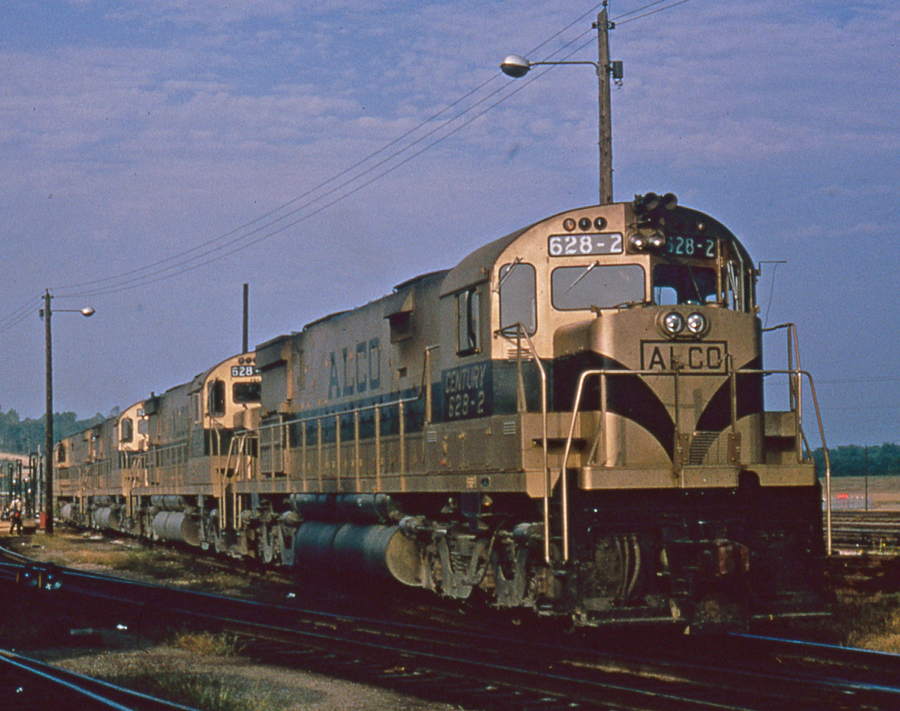
Alco demonstrator C628s. The C628 was a victim of being ahead of its time. It came out in 1963, packing 2750hp through six powered axles (hence the name C628: Century series, 6 axles, 2800hp). They packed unmatched power but were on the big and heavy side and railroads hadn't quite grasped the concept of high-horsepower diesels. Railroads that had the infrastructure to handle them loved them, but a lot of other railroads ditched them due to the wear and tear they caused. All told, Alco only moved 186 of them. Only 3 years later, EMD introduced the SD40, which was 6-powered axles with 3000hp, and sold them like hot cakes.
NickD said:3 Lehigh Valley C628s, 2 in Cornell Red and 1 in Snow Bird, leading the 2 Delaware & Hudson Baldwin RF-16 "Shark Nose" at Schenectady, NY in 1975. This would be a year before the Lehigh Valley became part of Conrail.
That would explain why I never saw Lehigh Valley locos when I lived in the Lehigh Valley in the first half of the '80s.
Alco's Century series was their last gasp before they shut the doors. On paper they had a lot of potential, with the new 251 prime mover being much more reliable over the 244, and clean styling that made them fan-favorites. They also continued the trend of Alcos being luggers, having more tractive effort than EMDs of the same power rating. Also, replacing their old naming system that was a bit arbitrary (RS1, RSD5, RSC3) which told the basic details of the engine. C was for Century, the first digit was for the amount of powered axles, and the second two digits were horsepower. The irony was that while these were arguably the best-built and most-reliable Alco diesels to date, too many railroads had lost faith in Alco over their 244-powered models, as well as the fact that GE had now joined the market.
C415: The oddball of the Century series. Alco thought there might be a market for a center cab switcher that could be used for switching and light duty mainline service. So they came out with the 1500hp C415 in 1966. But the C415 was a case of a misread markets, as most roads just preferred to use older existing engines for such duties, rather than spend cash on a new model for niche service. So, Alco only moved 26 of them.
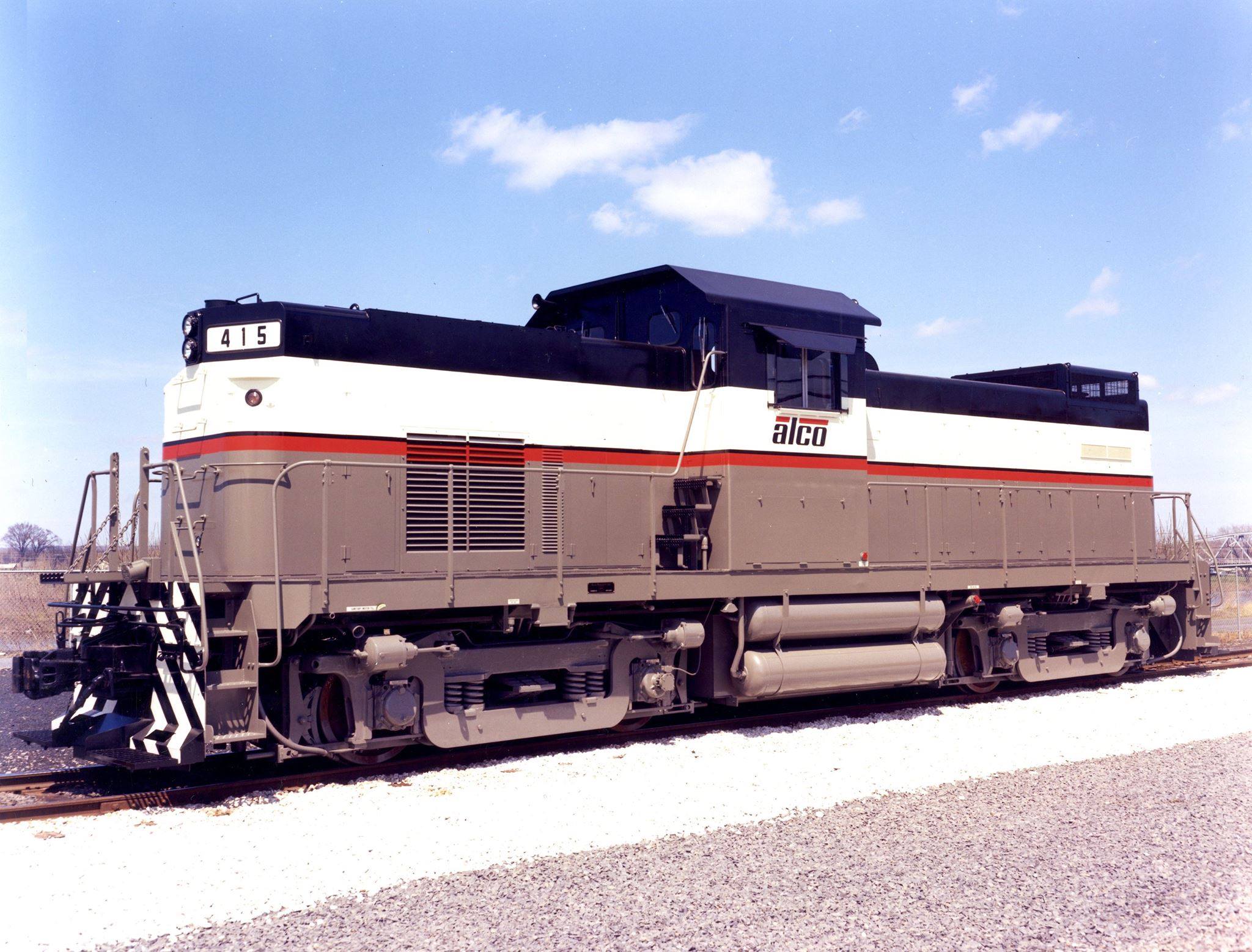
C420: The distinctive one of the bunch (excepting the 415) the C420, introduced in 1963, was easy to spot with it's long low front nose that gave them a bit of an alligator aesthetic. Only moderately successful, at only 131 sold, the C420 still proved well-liked with the railroads that bought them, and they had a surprisingly long life and high survival rate, with about 30% built still operating

C424: The most successful was the C424, introduced in 1963, at 191 units sold. Again, they were pretty long-lived and well liked by the railroads that actually bought them. Again, they seemed to be survivors as well, as a large percentage of them are still on the job on various shortlines. Mohawk, Adirondack & Northern, a line near me, still keeps a good amount of C424s on their roster.

C425: Introduced in 1964 as an updated and uprated C424, the 2500hp variant was designed to go head to head with GE's new entry to the locomotive market, the U25B. A victim of Alco's rapidly sliding market segment, they only moved 91 to 6 railroads. Visually, they are near-indistinguishable from their C424 brethren.
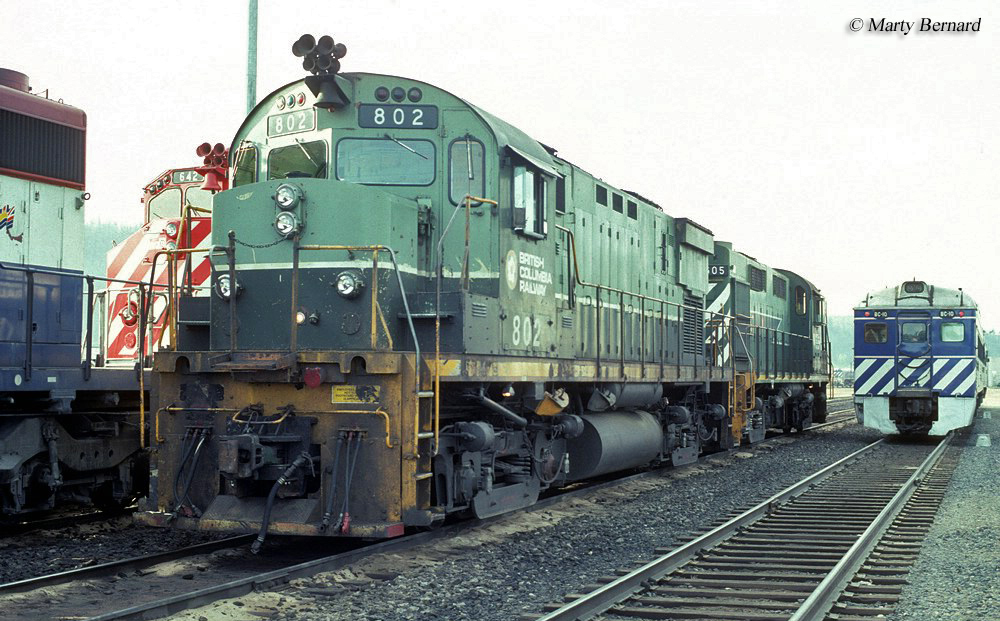
C430: Introduced in 1966 as an upgraded C425, the 3000hp C430 was a sales disaster, selling only 16 units to 4 railroads, with New York Central getting the most (10). Again, this was before the big horsepower boom, and 4-axle units were starting to fall out of favor, especially high-powered ones, as they struggled to put down power in the pre-computer days. Their Hi-Ad trucks also made them extremely rough riders that weren't liked by crews. Despite their rarity, several still exist and are preserved. They are easily distinguishable by their snub noses and bulging intercoolers and radiators on the long hood.

C628: Introduced in 1963, the C628 was originally supposed to be a C624, but Alco decided to take advantage of the greater traction offered by three-axle trucks, and punched the engine up a few hundred horsepower, resulting in the monster C628. These can be distinguished by the 6-axle trucks, short nose like a C430, and relatively flat long hood sides. But you're unlikely to see one, as only 2 remain and both are ex-D&H units in Mexico. I wonder if they'll ever get repatriated liked the Alco PAs.

C630: An upgrade of the C628, the C630 arrived in 1965, one year before EMD's smash hit 3000hp, 6-axle SD40. The C630 was much cooler received, only moving 77 units, with another 56 Canadian-built variants (C630Ms and M630s). By this point, EMD and GE were clobbering Alco, and the C630 was even harder on roadbeds than the C628, to the irritation of purchasers. Also, not helping the C630s cause, was its timing, being introduced at a time when the railroad industry was in collapse and few roads could afford new locomotives.

C636: Only a year before Alco's North American branch closed, they introduced the big C636. While it beat EMD to the 3600hp punch by a few years, it was just too big and heavy and introduced at a terrible time for the market. It also suffered reliability troubles with the GE electrical components, as GE was now competing against Alco and no longer selling them the top-shelf parts. Notably, during the C636 demonstrators' tests on the Southern Pacific, the same unit burned up a traction motor on 3 out of 4 tests. The US only moved 31 of them, while Canadian sales through Montreal Locomotive Works, sold an additional 52. There are still some 636s in action, although their numbers are dwindling.
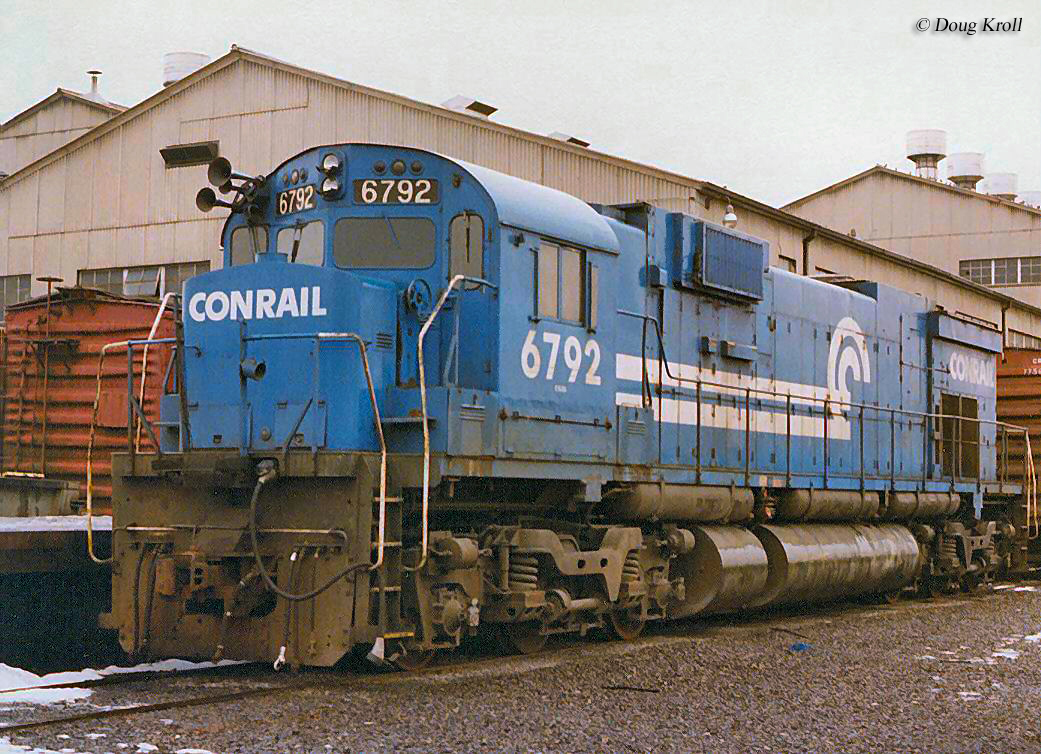
C643DH: Not a standard production model, in the 1960s and '70s, the Southern Pacific developed an interest in diesel-hydraulic locomotives to cope with their many steep grades. They purchased some Krauss-Maffei built units, but also Alco offered to take a stab at it for them. A massive engine, the C643DH used two C628 engines with Voith hydraulic transmissions. The SP ended up ultimately dissatisfied with both the K-Ms and the Alcos due to reliability issues and the parts availability for the European components. All 643s ended up being scrapped.
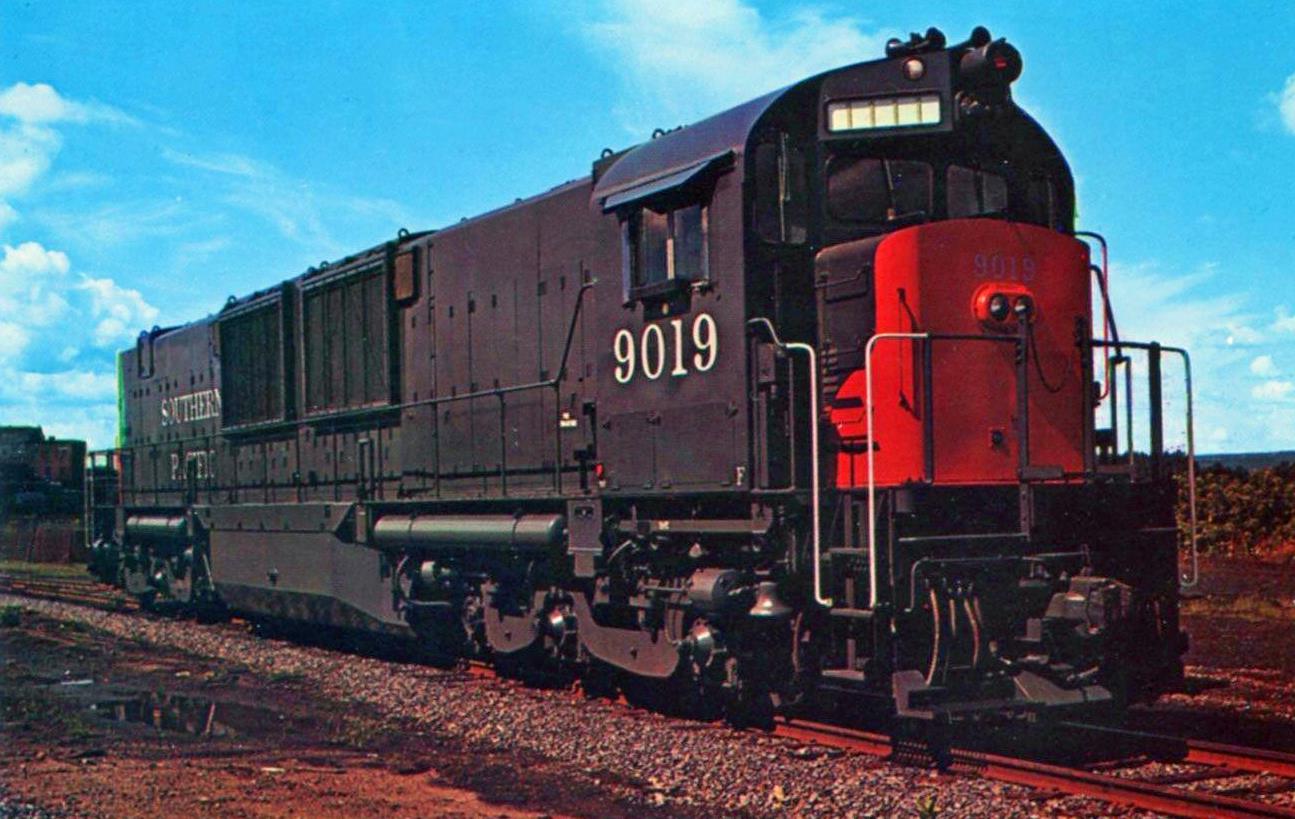
C855: The Union Pacific loved huge powerful equipment, and in the '60s purchased huge locomotives from Alco, EMD and GE. Alco and UP had previously collaborated on the Big Boys, so it seemed a good pair. So in 1964 Alco constructed the massive C855, using 4 2-axle trucks and 2 C628 powerplants but with GE generators and traction motors. They were a case of technology gone too far though, and suffered numerous mechanical and electrical troubles and the 3 of them were retired and cut up by 1972.
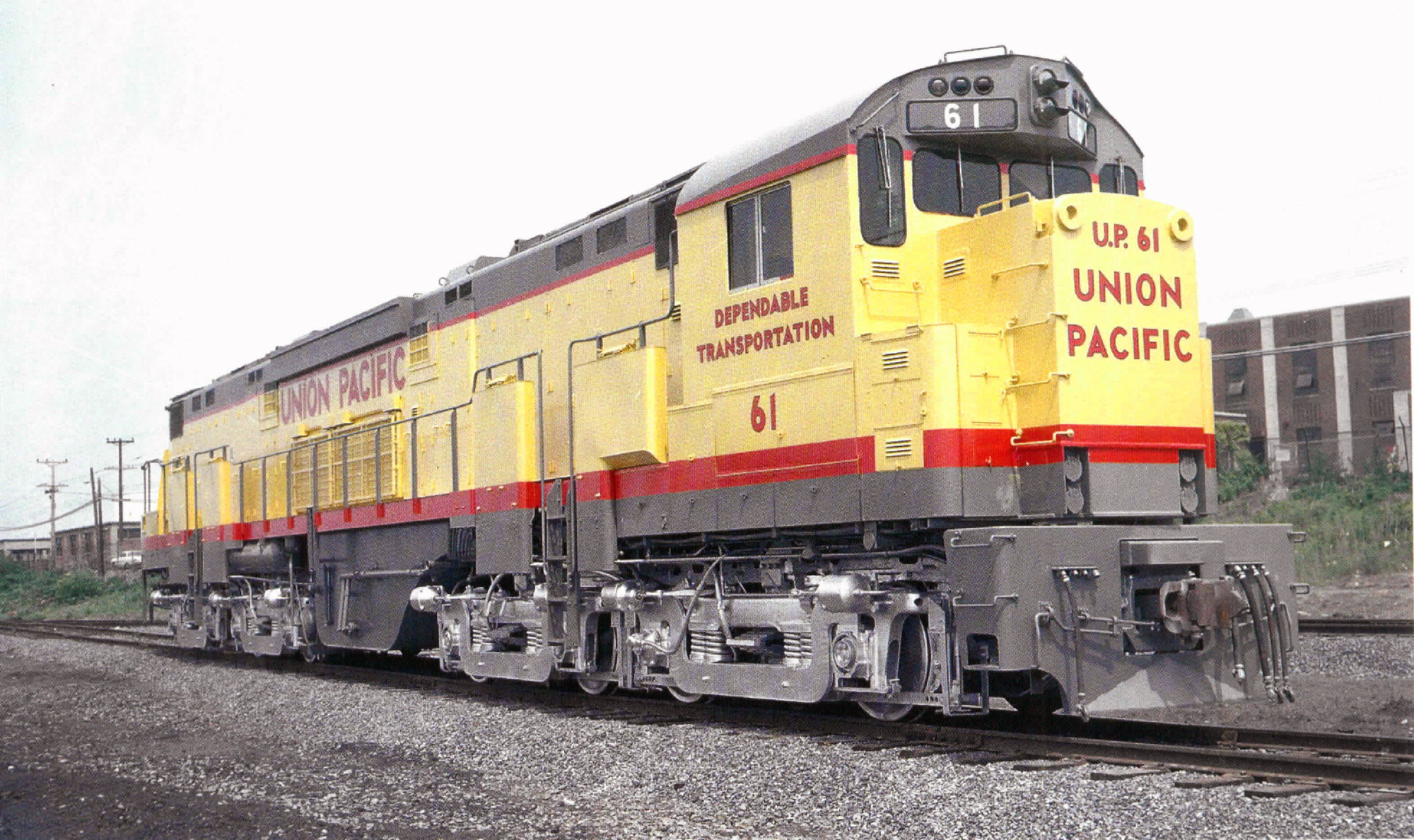
Duke said:NickD said:3 Lehigh Valley C628s, 2 in Cornell Red and 1 in Snow Bird, leading the 2 Delaware & Hudson Baldwin RF-16 "Shark Nose" at Schenectady, NY in 1975. This would be a year before the Lehigh Valley became part of Conrail.
That would explain why I never saw Lehigh Valley locos when I lived in the Lehigh Valley in the first half of the '80s.
Yep, Lehigh Valley was part of the Consolidated Rail Corp. merger in '76. Along with Penn Central (itself a merger of PRR and NYC), Erie-Lackawanna (a prior merger of Erie and DL&W), Lehigh & Hudson River (a largely forgotten victim of Penn Central and the Poughkeepsie Bridge fire), Central Railroad of New Jersey, Reading (who had tried to get in on Chessie Systems and was rebuffed), Pennsylvania Reading Seashore Lines, and the Ann Arbor (most far-flung of the lines)

It's funny that while Chessie Systems turned away Reading when Reading tried to join in on the Chessie Systems, but then when Chessie Systems wanted to run steam excursions, they rented an ex-Reading T1 (#2101) from Ross Rowland and doll it up in Chessie Systems paint. "Sorry, Reading, you're not good enough for us. But your steam engine is."

Those Reading T1s are a pretty stylistically "wrong" engine. Weird really wide Wooten firebox (see how it slopes way out past the running boards over the trailing truck) and headlamp that's just slightly above center, plus a boiler that seems excessively large in diameter. They're just awkward-looking. I appreciate the thriftiness of them though, as Reading took old 2-8-0s that were too weak and slow and converted them into these 4-8-4s. And the T1s were, by most accounts, pretty powerful engines.

There's actually 4 surviving Reading T1s and all of them lead an excursion career after the Reading retired them. The #2100 was bought as a back up to the #2101. She would then be sold off and bounce around the country. Currently it is undergoing a restoration to return it to service by American Steam Railroad. #2101 was kind of the star of the show and pulled the 1976 American Freedom Train as well as Chessie Systems steam specials before being damaged in a fire and the #2100 taking over. She's safe in a museum but non-operational. #2102 went to Akron, Ohio and ran there for 23 years pulling trips, then came back to PA and ran for a couple years at the Reading, Blue Mountain & Northern. She was parked there for a couple years but is now being rebuilt with hopes to have her in service in the coming year. And #2124 was retired in 1963 after it's flue certifications timed out, then went north to Vermont to the original Steamtown, then came back to Scranton PA, where it is on display. Honestly, #2124 is probably the best to restore to operation, as it has roller bearings on both the rods and axles (the other 3 only have them on the rods) but is the least likely to be restored because Steamtown.
A pair of oddities. These were Baldwin AS16 1600hp road switchers. Nickel Plate Road had the lead engine, #320, reengined with an 1800hp Alco 251B engine from an Alco RS11, as well as the long hood from the RS11. The unit behind it is another Baldwin AS16 that is reengined with an 1800hp EMD 567C engine and the long hood from an EMD GP18. It was not unusual for both Alcos and Baldwins to get reengined with EMD powerplants later in life, but an Alco-repowered Baldwin is definitely rare.
In reply to NickD :
How about a history lesson on U-boats? I have an HO scale Chessie U-boat that I bought back in 1977 or so. Hasn't been run for decades, but I did dig it out of the box recently.
In reply to T.J. :
Okay. Not a big fan of them, as they hammered the nails in Alco's coffin, but sure.
From Alco's first entries into the diesel locomotive market, they had been allied with GE. Alco built the engines and bodies and frames and GE provided all the electrical parts. But when Alco's reputation took a blow from their 244 engine's reliability troubles, their market share began to slide. GE had also allied with Fairbanks-Morse (hence the name of the F-M "Erie-Builts", which were assembled at GE's Erie plant) but F-M had never made inroads to the market before quitting in 1956. In 1959, GE finally became dissatisfied with the Alco-GE partnership and decided to jump straight into the road locomotive business feet first.
Now, there was a precedent for GE building entire locomotives. From the 1930s onwards, GE had produced a dizzying array of switcher locomotives of different configurations and weights, typically using either Caterpillar or Cooper-Bessemer engines. GE had also produced full-size straight electric locomotives, competing against Westinghouse. These included the legendary PRR GG1, a design that wasn't replaced until 50 years after its introduction. And before the release of the first North American U-series, GE had been building a bunch of diesel road freight locomotives for foreign markets with reasonable success.
In 1959, GE dropped the Universal Series lineup into the US market and blew a hole in Alco and EMD's hulls. Their timing was perfect, as many railroads fleets of early EMDs and Alcos and Baldwins and F-Ms were starting to get up there in years and become underpowered, as well as starting to suffer reliability issues. Baldwin and F-M had left the market a few years earlier, and many railroads were reluctant to purchase the newer Alcos due to reliability issues in their earlier models.
The U-Series (called U-boats by crews and railfans) used a naming system similar to Alco's Century series ironically. The U stood for Universal, the next two digits stood for horsepower, and the following letter represented powered axles per truck (a B is 2, a C is 3).
U25B: The opening shot in GE's salvo was the 2500hp, 2-axle U25B, introduce in 1959. Rather than rely on third-party engines, it used GE's own FDL-16 4-cycle, 16-cylinder turbocharged diesel (seems that GE learned that Alco's turbo 4-strokes were ahead of the curve) and was relatively light for its size, while developing great tractive effort. Railroads liked them for their power, simplicity and ease of maintenance and GE moved 478 of them, double the amount of EMD's contemporary GP20 and more than twice the combined sales of Alco's C424s and C425s.
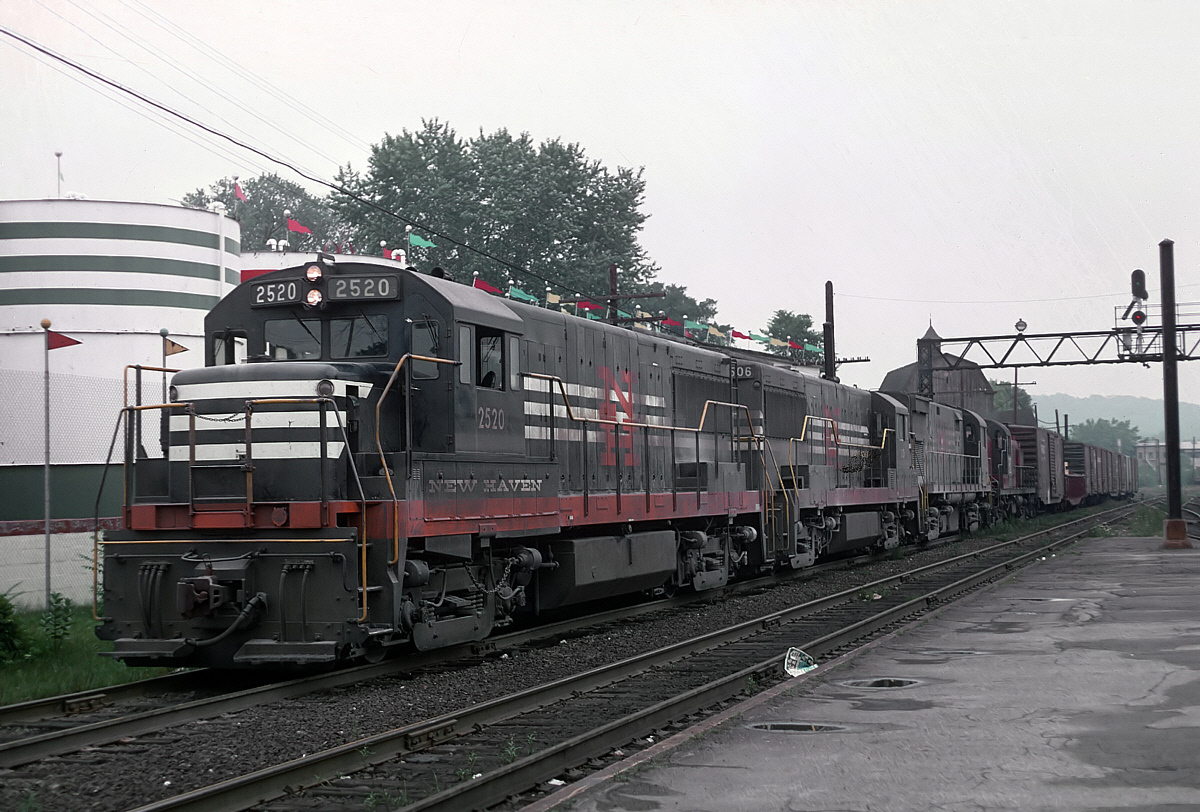
U25C: Introduced in 1963 as a 6-axle variant of the U25, it failed to find as much success. While 6-axle locomotives had more tractive effort (GE claimed 17% more due to more feet on the ground) and were easier on track (spread the weight better), railroads couldn't grasp the concept of high-power 6-axle units yet. In their mind, 6-axle units were for working on light branch lines and din't need huge power. So the U25C only moved 113 units.
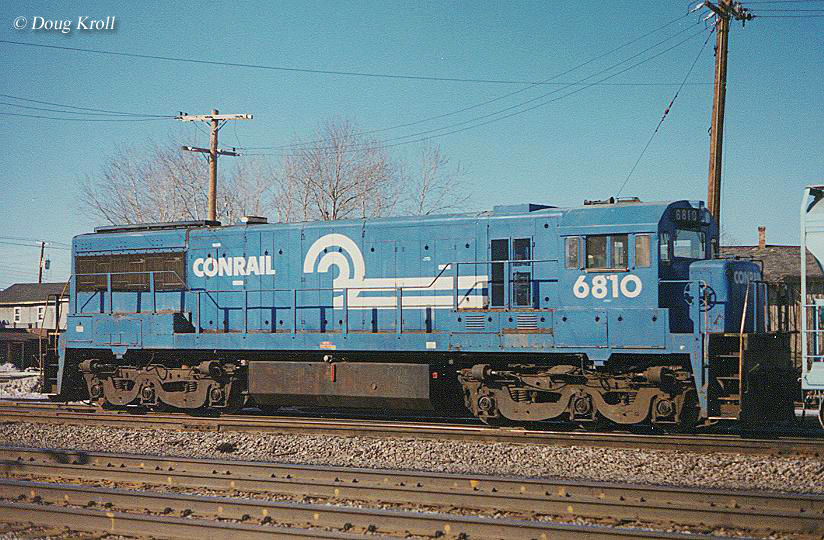
U28B: In 1966, GE released an update of the U25B with 300 extra horsepower. With hard times ahead in the railroad industry, and many railroads already having purchased hordes of U25Bs, plus the 3000hp EMD GP40 having come out a year before, the U28B was not quite as successful as its predecessor, moving only 148 units, but this still put to shame most models of the Alco Century range.

U28C: Alongside the U28B, GE introduced a U28C. Again, it was the 2500hp model with a few more horsepower on top. The problem was, it was hitting the market after EMD's SD40, which also offered an additional 200hp. So the U28C only drew 77 buyers, while EMD's SD40 moved over 1200 locomotives. Interestingly, there was a passenger service variant called the U28CG (G for generator) which was a U28C with a steam generator for passenger car heating, as well as gearing more suited to higher speeds. These were designed for Santa Fe, who wanted to retire their aging EMD E and F-units, and they bought 10 of them. But after derailment troubles began with the U28CG, Santa Fe stripped the generators from them, regeared them and shoved them in freight use before cutting them all up
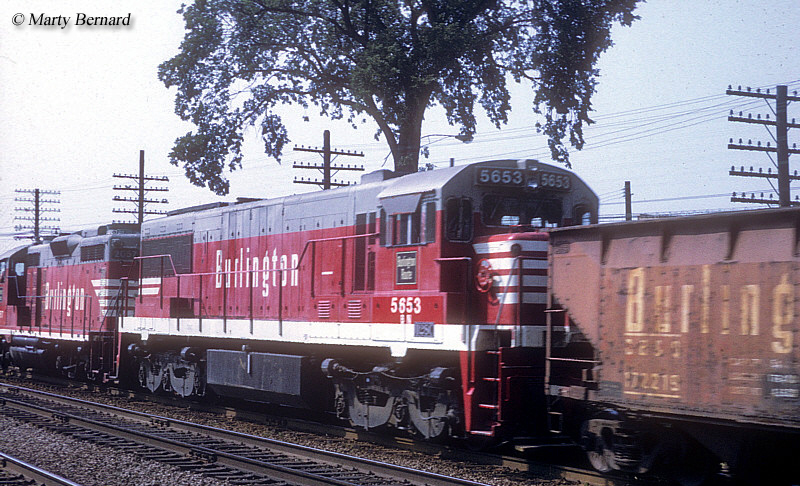
U30B: Also introduced in 1966 was the 3000hp U30B, designed to combat the EMD GP40 and the Alco C430. Fairing better than the U28B with 298 sold, it still failed to recapture the market in quite the same way as the U25B, part of that being that the 4-axle market was on its way out. Interestingly, Norfolk & Western ordered all of theirs with a high short hood, which was not an option GE offered but a configuration that N&W preferred. Not one to turn away a prospective customer, GE complied and N&W rewarded them with a 110 unit purchase
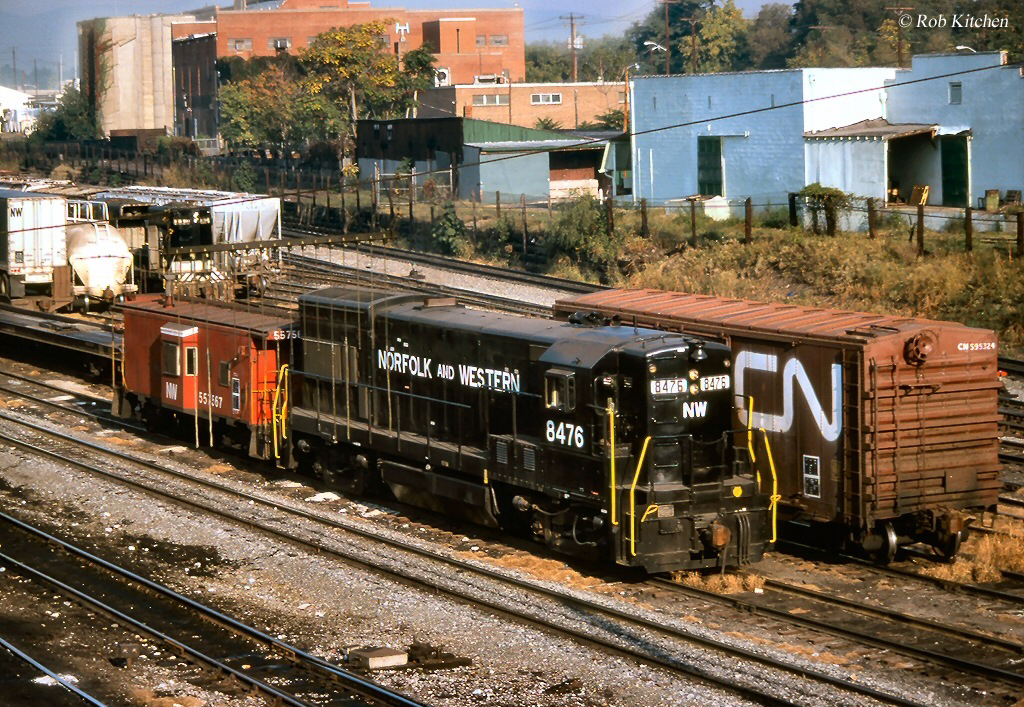
U30C: Marking the beginning of the 6-axle's rise to dominance, the U30C sold 606 locomotives, over twice what the U30B sold. But the U30C was marked with reliability issues with traction motors, causing many railroads to stick with SD40s and their upgrade the SD40-2. There was also a carbody variant with fluted sides, a steam generator and passenger gearing built for the Santa Fe called a U30CG and an Amtrak version called a P30CH (nicknamed Pooches) Unfortunately, these suffered the same derailing issues as the U28CG at higher speeds and both Santa Fe and Amtrak subsequently parked them and went to EMD for F40s.
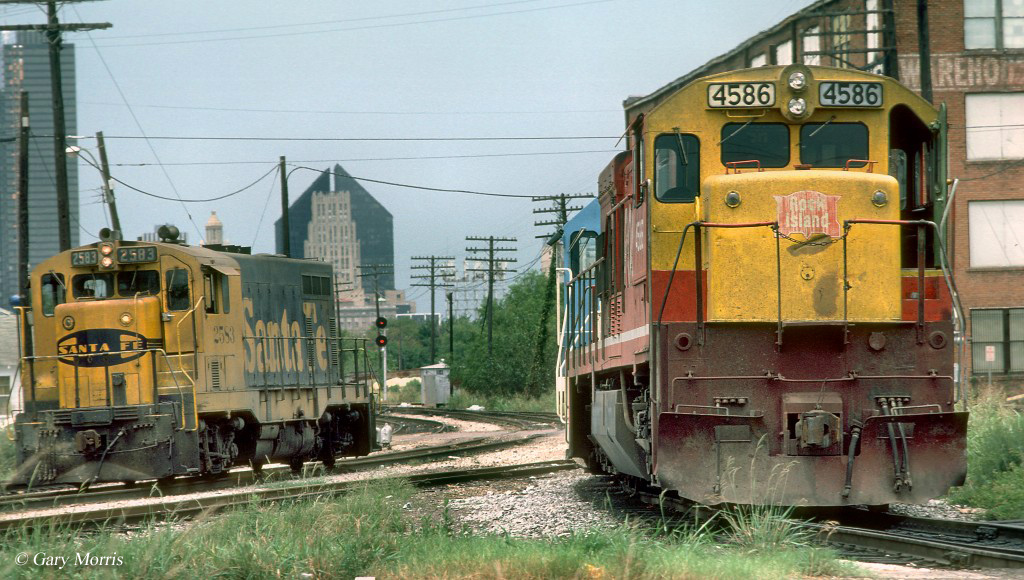
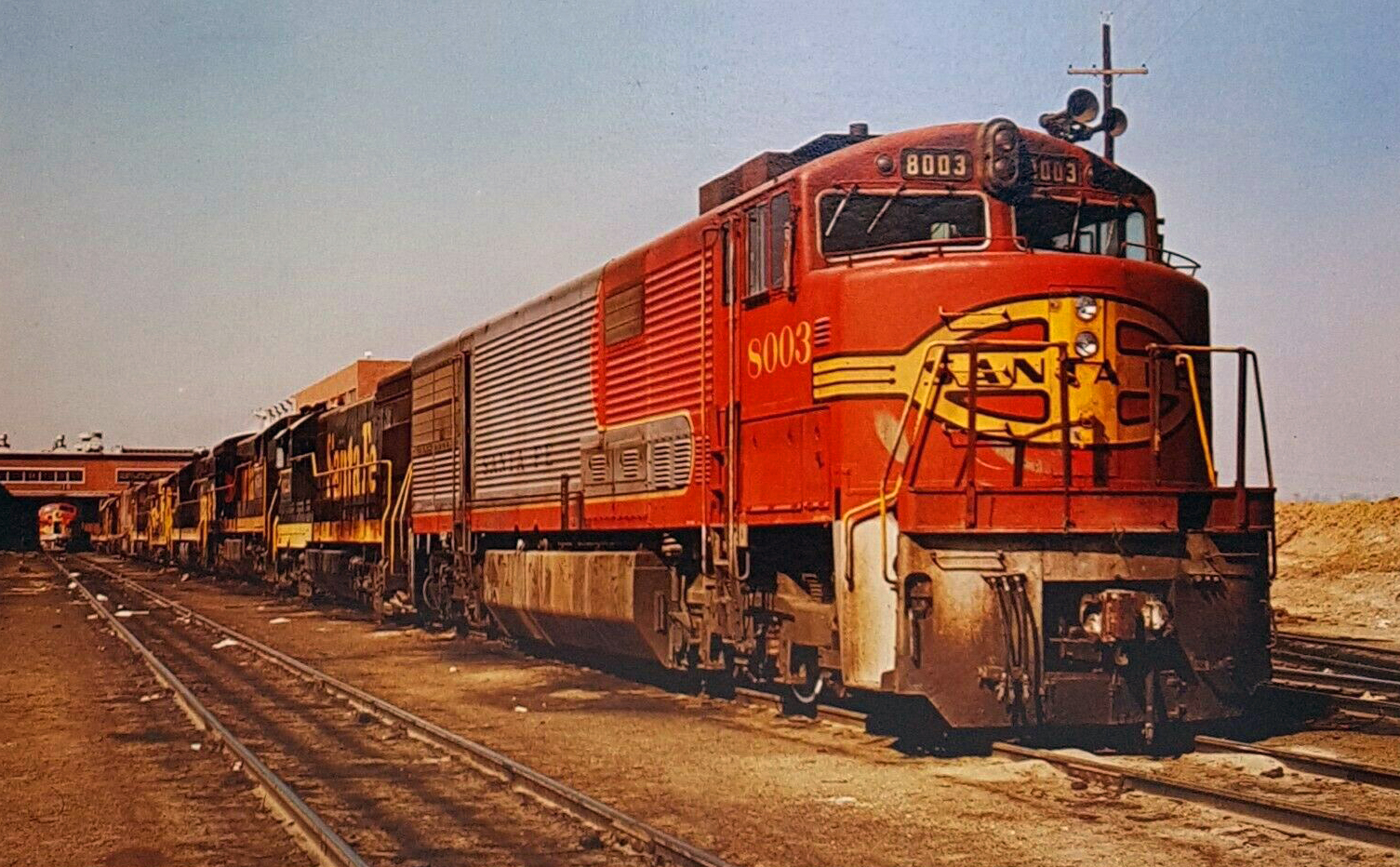
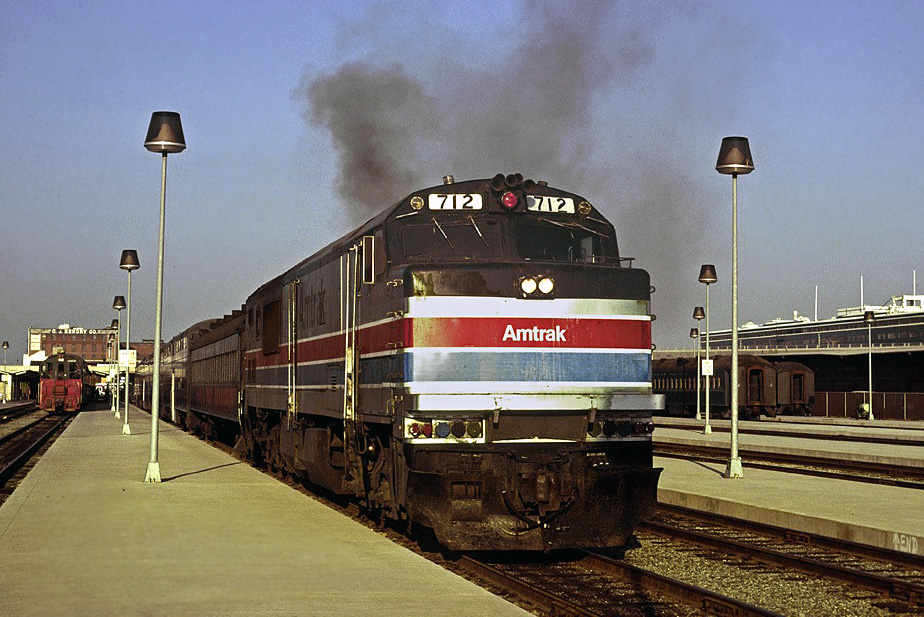
U33B: After the poor sales of the U30B, GE wondered if the solution was more horsepower and launched the 3300hp U33B. They were wrong and misread the market's shift away from four-axle units. This resulted in GE's worst-selling B-truck locomotive, at only 137 sold, with a whopping 83 going to Penn Central. the most noteworthy part of the U33B was that it introduced the hammerhead radiator flares that would become a GE trademark all through the later -7 and -8 production.
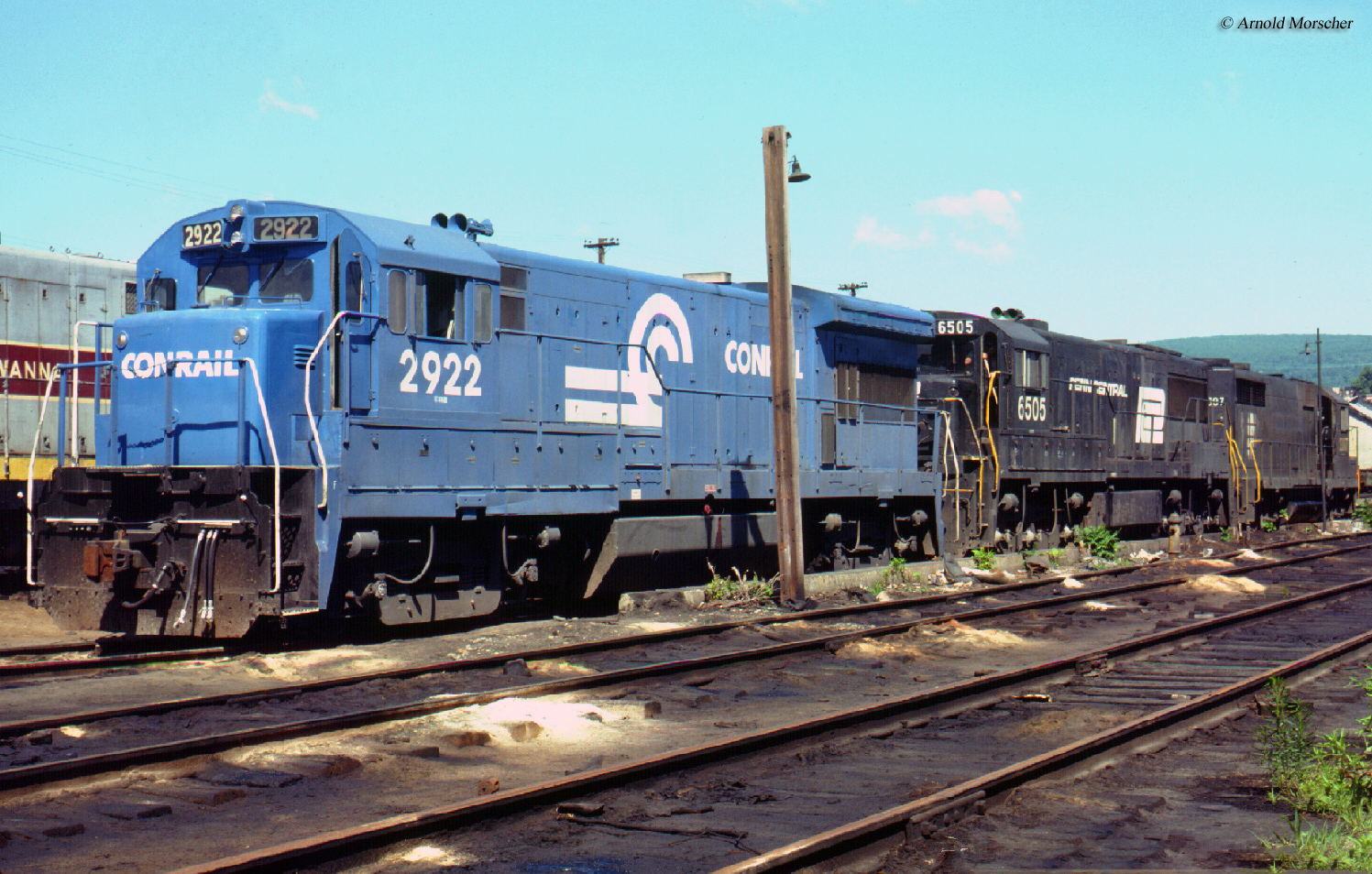
U33C: Outselling the somewhat disastrous U33B, the U33C showed that 6-axle units were the future. Not as strong a seller as the U30C, and suffering early production reliability woes, the U33C still sold 375 units, with Southern Pacific clearly a fan at 194 units purchased. Discouraged with the U28CG and U30CG, Santa Fe did not try to order a passenger version.
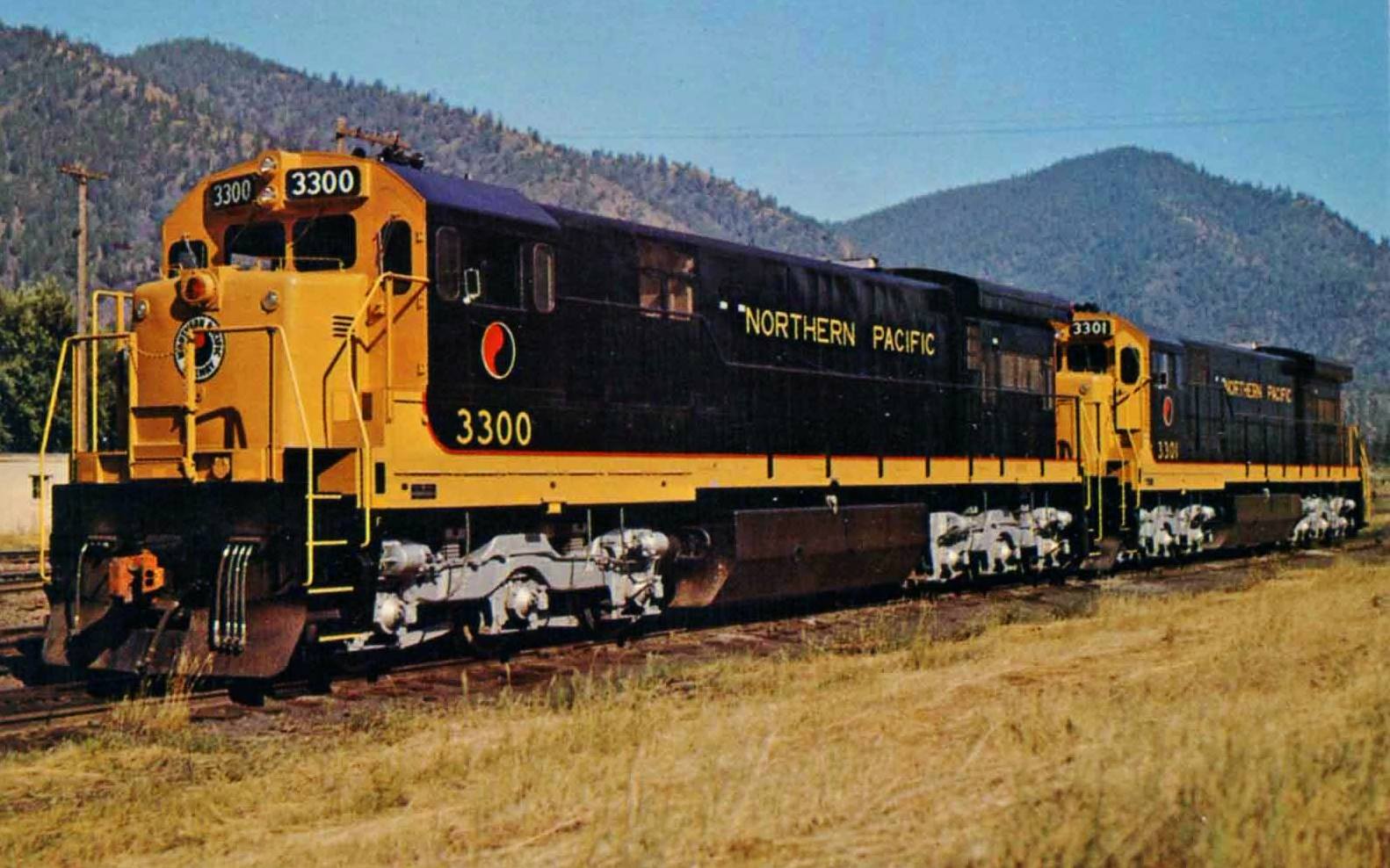
U36B: Still trying to make things work in the 4 axle market, in 1969 GE introduced the 3600hp U36B. EMD had never cataloged an GP45 and Alco, who had now ceased to exist, had never logged a C436, which should have been a sign to GE. 900hp per axle was just too much for the era that didn't yet have computerized traction control, and the U36B earned a reputation for wheelslip at the hint of throttle application. They only sold 56, 17 to Auto Train Corporation and 39 to Seaboard Coast Line, which made them the worst selling 4-axle they built. Still, both purchasers used them well into the 1980s, so perhaps they weren't as vile as their reputation.
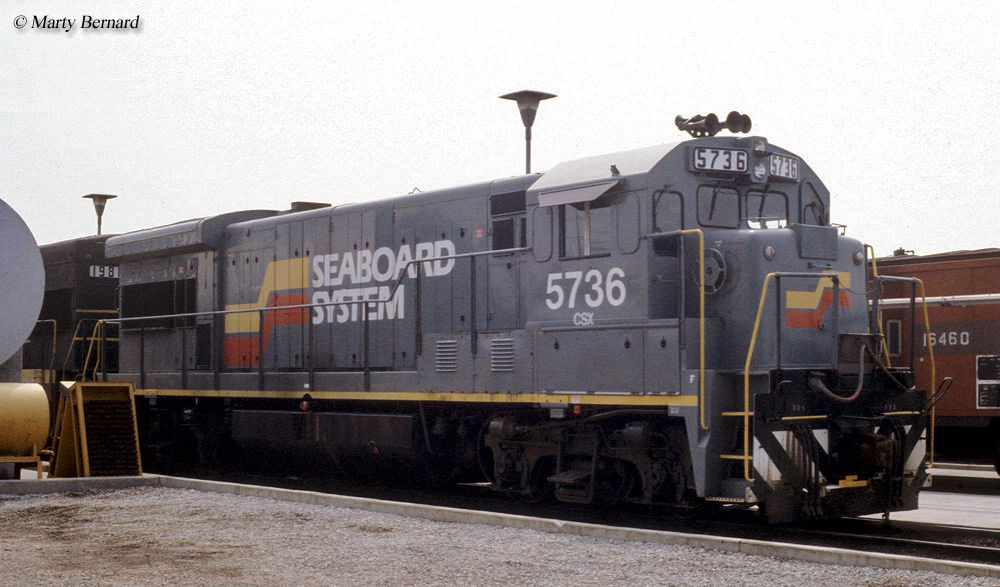
U34CH: Preceding the U36C in GE's catalog was the U34CH. Designed for use in commuter service, the engine was mechanically the same as the U36's, but was rated at only 3430hp because the engine had to run below peak horsepower to get the correct AC voltage frequency at the passenger car power generator. Turn the head end power generator off, and they could make the full 3600hp. Built in the beginning of 1970 for the Erie-Lackawanna and New Jersey Transit, they served well into the '90s before retirement, with one even set aside for preservation.

U36C: Trying to combat EMD's SD40-2, as well as their impending SD45, GE introduced the 3600hp U36C. But they still struggled against EMD's reputation, experience and technology. Santa Fe liked them though, snapping up 100, even after their U28CG and U30CG troubles. Sales hit 236 for the biggest of the standard-production U-series.
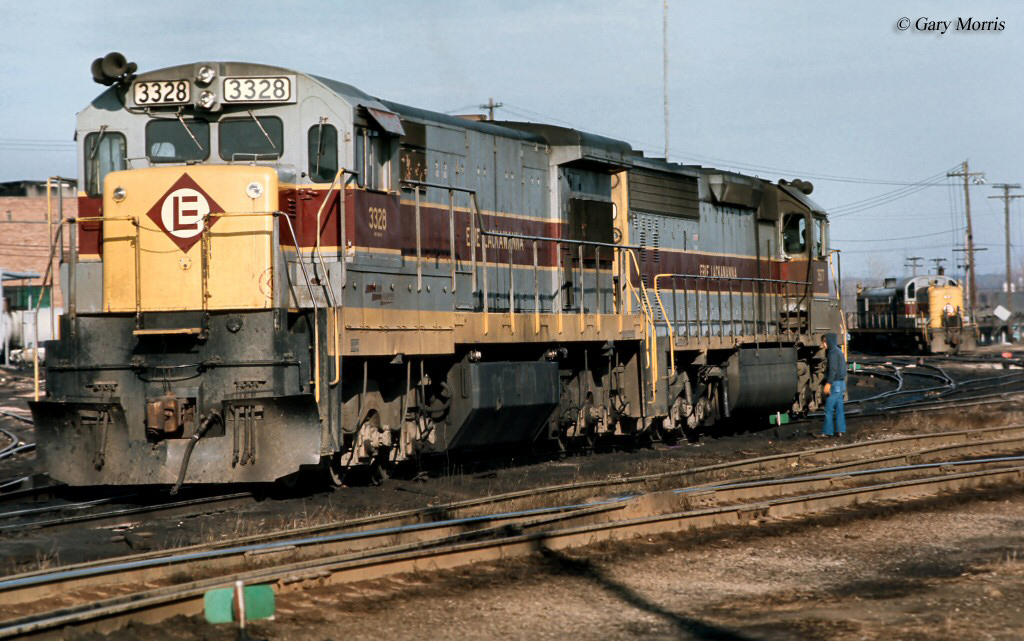
U18B: Nicknamed the "Baby Boat", the U18B was one of the last general production GE U-series cataloged. Making only 1800hp from a unique 8-cylinder FDL engine variant, and physically much smaller and lighter than it's brothers, the U18B was intended for use in light branch line service where 3000hp monsters wouldn't do. The problem is, railroads had scads of old first-generation diesels that they could employ in that job without spending coin on brand new locomotives. They only sold 163 of them, and 105 of those were to the Seaboard Coast Lines. If SCL hadn't had such a fascination with them, sales would have been dismal. GE had been planning a successor unit for their -7 lineup, called a B18-7, but the poor sales of the U18 shelved that plan.
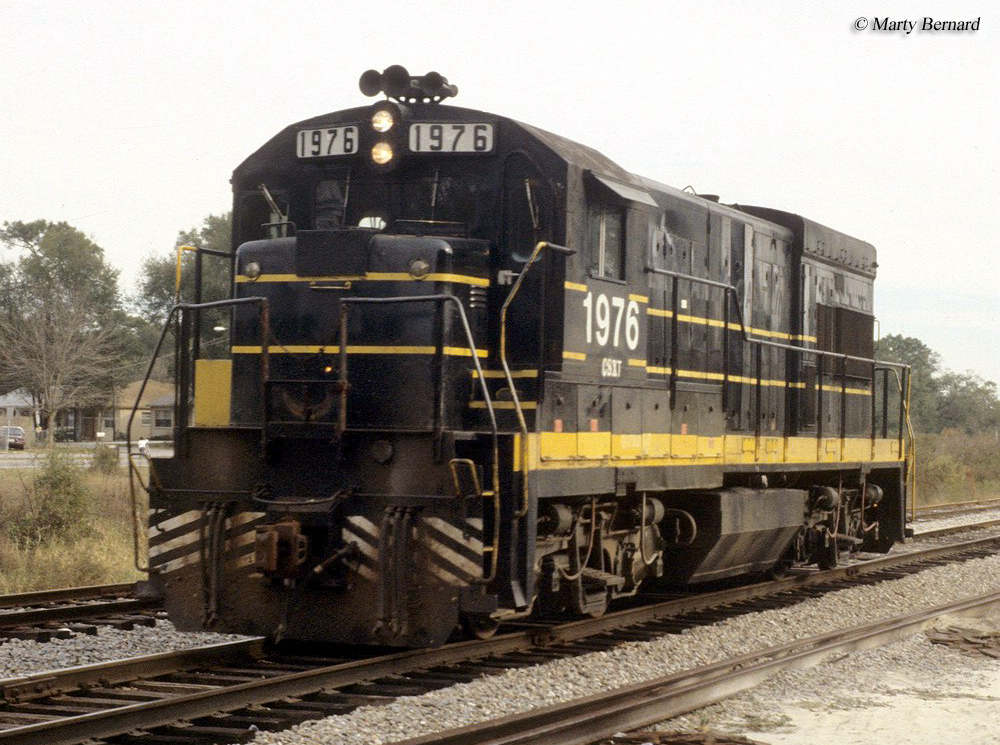
U23C: Alongside the U18B, GE tried to offer a 2300hp 6-axle version for the same purpose. Using a 12-cylinder FDL variant, they used the same frame and body of a U28C, just with less hood doors. But GE had failed to learn from Baldwin, Alco and EMD's attempts to offer branch line and transfer locomotives, and the U23C remained unpopular in the US, only selling 53 locomotives, although Brazil ordered 170 for their federal railroad.
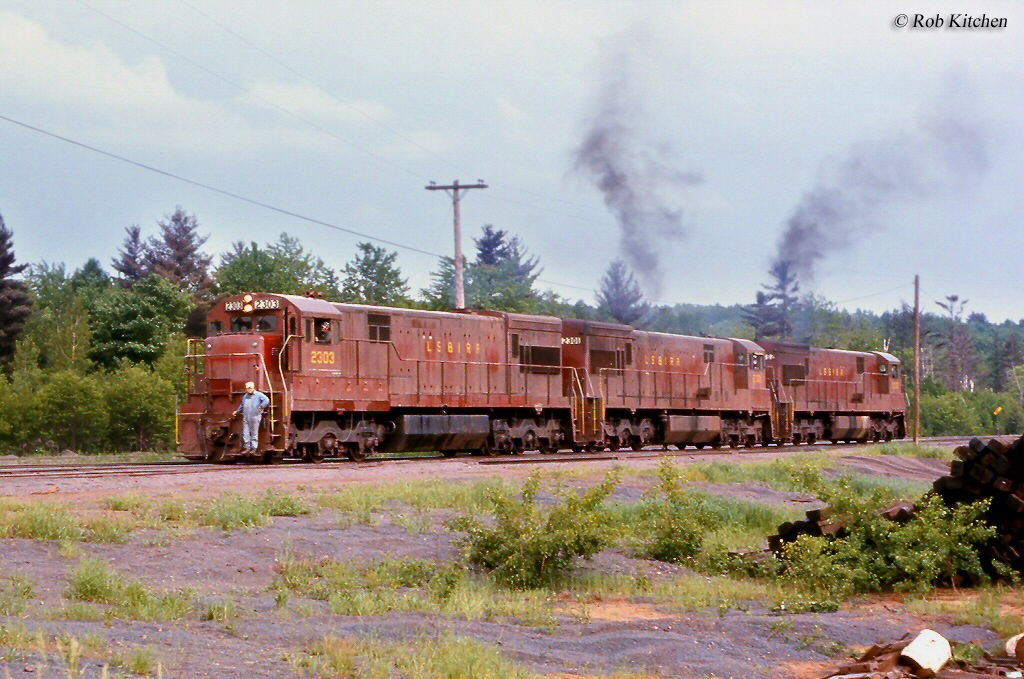
U50: Just like EMD's Centennials and Alco's C855, GE tried to satisfy the Union Pacific's appetite for monstrous locomotives. GE had earlier collaborated with Alco on UP's gas turbine electrics, so they took a crack at a diesel electric, with the big U50. With the engines from 2 U25Bs and 4 2-axle trucks, they were over 83 feet in length and weighed 557,000 pounds. UP took delivery of 23 of them in 1963 and Southern Pacific grabbed up a few as well. UP operated theirs until 1977 before retiring them all and scrapping them, while the SP was less impressed and cut theirs up earlier.
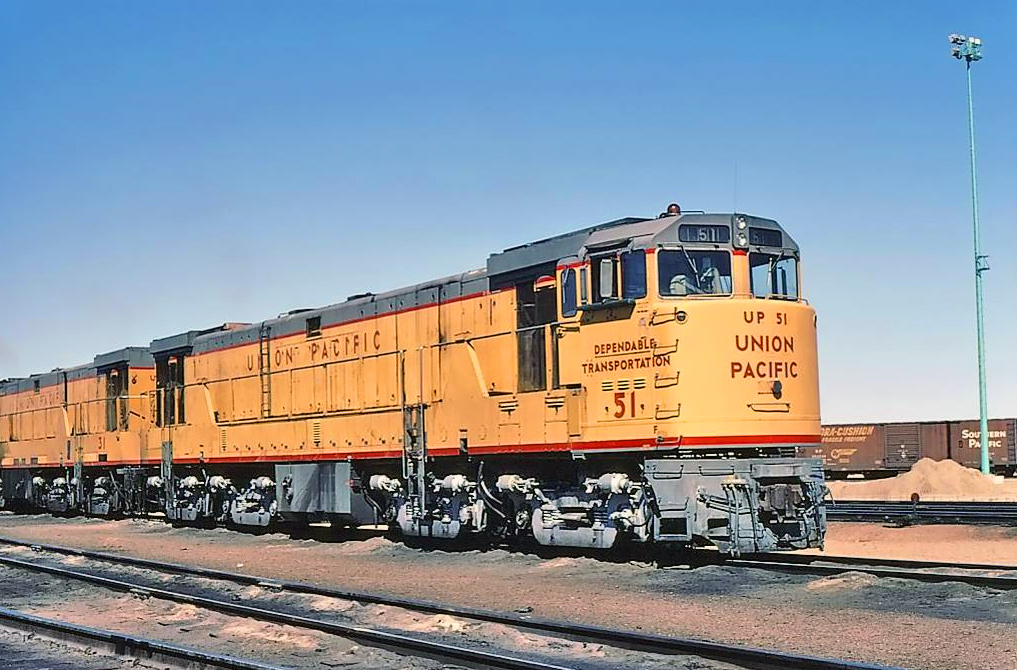
U50C: As the U50 was just too big and heavy, GE took another crack at building an engine with the same pulling power, but a slightly more manageable package. The U50C used 2 uprated U23C 12-cylinder engines, making 2500hp a piece, instead of the 2 16-cylinder U25 engines in the U50. They also rode on two C trucks, instead of four B trucks. This made them only 442,660 pounds, but they were still too heavy for the roadbed and suffered numerous reliability issues as well. UP still bought 40 of them, but was never particularly pleased with them and retired them all and had them cut up in 1978, after only 7 years of service.
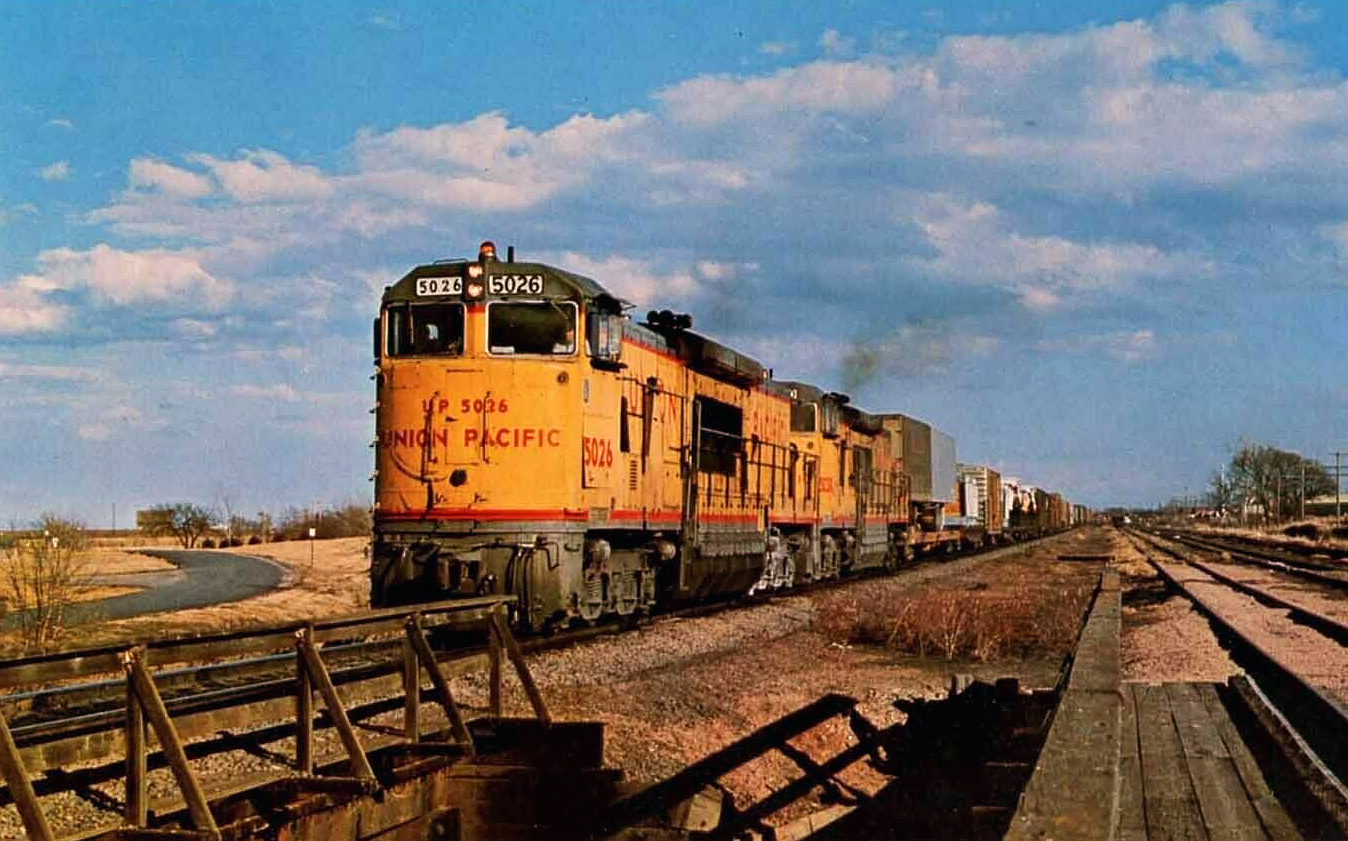
You'll need to log in to post.